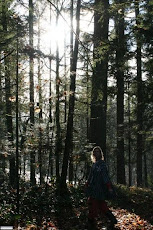 Our cute little 1-bedroom rental cabin, fashioned out of the old garage, is perfect for a bachelor but we just keep getting blessed by beautiful families who need a little more room to spread out. So we decided to add on a lil' office and big ol' bedroom in a way that would be attractive, functional, relatively cheap, and eco-friendly. Enter natural building.
Our cute little 1-bedroom rental cabin, fashioned out of the old garage, is perfect for a bachelor but we just keep getting blessed by beautiful families who need a little more room to spread out. So we decided to add on a lil' office and big ol' bedroom in a way that would be attractive, functional, relatively cheap, and eco-friendly. Enter natural building.
We had already had some trees taken down to let more sunlight onto our house and garden, and to better steward the overcrowded forest, so the first natural choice was to have a portable sawmill brought in to cut beautiful, sustainably-harvested, zero-mile lumber. With that frame up, we then imported clay from the gravel pit 4 km up the road, stirred in wood shavings from the mill 10 km away, and voila - we have one-foot thick "chip & slip" walls that'll provide amazing insulation and thermal mass with zero off-gassing, transport, waste, etc.

This weekend we're applying a plaster coat of mud, sand and straw (imported from the mainland, unfortunately I learned too late that we could have used our own cow manure for fibre instead). Stop by anytime this Fri, Sat, Sun or Mon and enjoy getting muddy while learning a new craft.
The windows, sad to say, are vinyl (just couldn't afford the beautiful locally-made wooden ones) but they are made just down by Seattle and of course are energy-efficient, sold by a locally-owned business, and allow plenty of natural light.
The "living roof" is supported by our own massive 4'x12' fir beams, then our own 2x8 tongue-and-groove ceiling board, then some (sorry again) rigid insulation, then a layer of cardboard for more insulation, and finally some pond liner and a layer of dirt into which we'll plant flowers and grasses. We'll not put it on until after the plaster's had time to dry.

The drawbacks? Well, it's darn slow. I started in April and have worked as quickly as the process will allow, but the mud takes about 1 week per inch to dry, and won't be hurried no-how.
The 12-inch-thick walls mean a larger footprint and more roofing materials.
It's taken a huge amount of manual labour. Huge. I'd guess that we put in over 300 hours of people-time (thanks to so many volunteer friends) just to mix and pack mud, and probably another 300 for mud plaster. Plus a huge effort to collect all the materials, and of course do all the foundation, wall structure, roof, electric, etc. I've done as much as I can myself, and have a master builder from OUR Ecovillage working with me when necessary - he leaves me a list of tasks to do, then comes back the next week to correct all my mistakes and set us on course for the next week of homework, and incredibly patient man to work with me!
The benefits? A deep sense of place and right relationship to use our own timber and our own muscle and our own wits. A rich community-building to have friends pitch in and learn together. A drastically-reduced carbon footprint and a healthier living environment by using local, natural materials. New construction at less than $100/foot, compared with maybe $150/foot for conventional building. And a building so beautiful that we're already eying it as our future empty-nester home.
In a society where we've learned to hire out construction (and pretty much everything) to "professionals" and "experts", it is truly liberating to reclaim our historic rights and powers to build our own shelter. We can do it, and end up with - in the words of the amazing Elke Cole who helped with the design - "a house that loves us back."
See more step-by-step photos on my facebook page







No comments:
Post a Comment